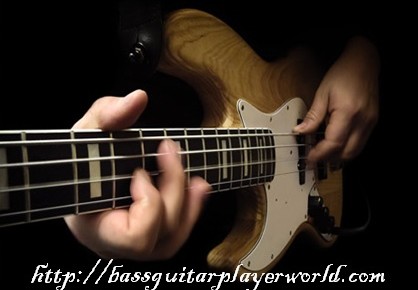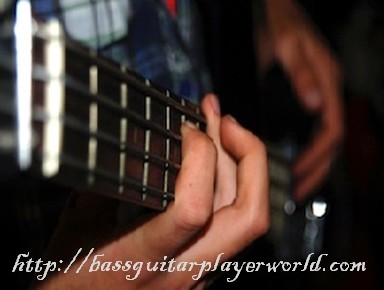Mixolydian Modes – Note Information And Diagrams
 After a while, even the most patient musician gets tired of the same Major and minor scales. Music is full of interesting sounds and shapes, and yet so many seem so incomprehensible, which makes it hard to move on no matter how tired of the same old scales we are. This is where modes come in.
After a while, even the most patient musician gets tired of the same Major and minor scales. Music is full of interesting sounds and shapes, and yet so many seem so incomprehensible, which makes it hard to move on no matter how tired of the same old scales we are. This is where modes come in.
Modes are actually scales. In fact, they are ancient scales that predate our Major and minor scales by a long shot.
Today we are going to discuss one of the most interesting of all of the scales for bass guitar, which is the Mixolydian mode.
What is the Mixolydian All About?
The Mixolydian mode is the fifth of the modes, and just like all other modes, it has the characteristic traits of a minor scale. What makes this mode so interesting though, is its unique sound. Of all the modes, the Mixolydian mode has the most exotic feel to it.
So what is the Mixolydian mode? The Mixolydian mode is essentially a scale in the key of G. The notes of this mode are G, A, B, C, D, E, and F. Just like all of the other modes, the Mixolydian possesses no accidental notes –sharps or flats—which makes it easy to play anywhere on the neck.
Let’s Get Delve Deeper

To properly play the Mixolydian mode, you need to have full comprehension of your fret board. This means you need to understand the interval relationship between each fret and, most importantly, the notes of your bass guitar fret board. If you don’t already know these things, take a bit of time to study the fret board and learn the notes. The rest will fall in tow.
Because modes contain no accidentals, they bring a unique sound when used to play over average Major and minor scales. For instance, if we were to play the Mixolydian scale over the key of G Major, the two contrasts in notes would look like this:
Mixolydian mode:
G, A, B, C, D, E, F
G Major scale:
G, A, B, C, D, E, F#
Notice how the Mixolydian mode is nearly identical to the G Major scale. The only difference is that the leading to of the Mixolydian mode has been lowered a half step from the note F# to the note F.
This means that if we were to play the Mixolydian mode over the G Major scale, we would result with an almost chromatic feel starting on the submediant all the way back to the tonic. This gives for an interesting contrast which is very noticeable when used properly.
Where From Here? Do NOT Learn And Forget…
As with all scales and techniques, the most important step is the one you must do yourself; practice. Try creating melodies with the G Major scale, and then use the Mixolydian mode to play over it. Try purposely accentuating the contrasts of the submediant notes of both scales by playing them together.
Set aside a block of time each day in which to practice, and use that time to familiarize yourself with the subtle differences between the two scales. Pay close attention to their qualities and try to discern them. This will help you to better master the Mixolydian mode. Above all, be sure to practice hard, and have fun.
See Huge Improvements In Your Playing Immediately
If you are serious about learning to play the bass, check out JamPlay. They offer the best online instructional content to help you achieve short term and long term goals. With lessons taught by some of the most famous bassists in the world and new content being added on a weekly basis, you can learn whatever you want at your own convenience!
Jamplay is absolutely fantastic and is highly recommended. Check them out today!






One Comment
Hello and thanks for sharing some insightful points about bass playing.
However, this article contains quite a few errors/omissions.
You say “… and just like all other modes, it has the characteristic traits of a minor scale.” There are already two errors here:
1. Three of the seven common modes are major, so saying “all other modes” is not right.
2. What determines a major or minor scale (mode) is its third note.
You say “Of all the modes, the Mixolydian mode has the most exotic feel to it.”
Using the word “exotic” is far-fetched. “Exotic” may be a matter of personal experience and taste. To most musicians (anecdotally) the mixolydian mode does not feel exotic … and certainly not the “most exotic”.
Next you say “The Mixolydian mode is essentially a scale in the key of G.” You could say “The G Mixolydian mode is essentially a scale in the key of G” as the mixolydian mode can be played in all keys.
This is even more of a blunder: “Just like all of the other modes, the Mixolydian possesses no accidental notes –sharps or flats” You should clarify that “Just like all of the other modes derived from the C major scale, the Mixolydian possesses no accidental notes –sharps or flats”
Here again “Because modes contain no accidentals” you need to clarify.
Very Important: You could and should point out for which chord types the Mixolydian mode is best suited.
Kind regards,
George Urbaszek
Creator of the original step-by-step online bass course
Info:
You can get detailed, in-depth instruction on how to play bass, including beginner bass lesson videos, from my online bass course. Lessons are delivered twice a week to your inbox.
These lessons start from the beginning and are truly step-by-step. They include email support (in case you have any queries) and a free assessment for subscribers.